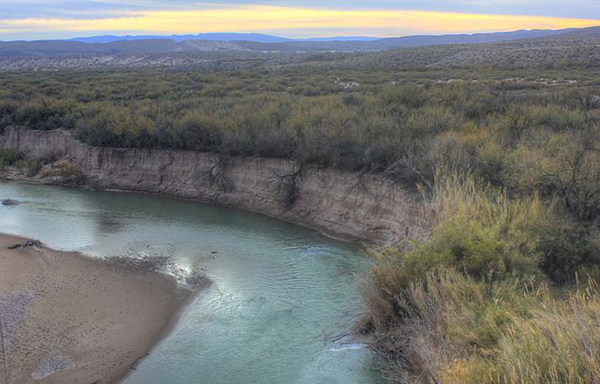- La Feria Community Holds Succesful Business Mixer Event
- Little Nashville to Take Place in Downtown Mercedes
- Lions Basketball Captures District Gold
- La Feria ISD Students Compete in Regional Chess Tournament
- Lions End First Half of 32-4A on a High Note
- La Feria ISD Held Another Successful Parent Conference
- Strong Appearance for Lions at Hidalgo Power Meet
- LFECHS Students Get to Meet Local Actress
- Students Participate in Marine Biology Camp
- Two LFECHS Students Qualify for All-State Band
Trump’s Visit to Texas-Mexico Border Intensifies Wildlife Concerns
- Updated: January 18, 2019

President Donald Trump’s proposed border wall along the 2,000-mile U.S.-Mexico border would pass through several wildlife conservation hotspots, including Texas’ Big Bend and the Lower Rio Grande Valley on the Gulf Coast. Photo: Yinan Chen/Wikimedia Commons
by Eric Galatas
MCALLEN, Texas – As President Donald Trump visits the U.S.-Mexico border in Texas to promote his proposed wall, wildlife conservationists are sounding the alarm.
Paul Sanchez-Navarro, senior Texas representative of the conservation group Defenders of Wildlife, says millions of dollars invested in protecting critical habitat along the border are at risk if the project goes forward.
Navarro notes that a wall would cut off migration corridors for more than 1,500 wildlife species that don’t recognize political borders.
“We have a lot of plants and animals depending on that area to go back and forth, and they’re going to be affected by that,” he states. “And all the money we’ve spent to protect some really key areas is just going to be thrown down the tubes.”
Navarro says two conservation hotspots in Texas – Big Bend and the Lower Rio Grande Valley on the Gulf Coast – would be seriously compromised by a physical barrier.
Trump maintains that a wall is necessary for border security, but Navarro agrees with many experts who say a better way to stop human trafficking and drugs from entering the U.S. is to beef up security at legal ports of entry.
The Trump administration also has allowed the Department of Homeland Security to sidestep bedrock environmental protection laws for wall construction already under way.
Navarro says the project should not go forward without a thorough environmental impact analysis, public input and the ability to resort to legal action to protect endangered wildlife.
“All the environmental laws are being waived in order to build this wall,” he points out. “By law, normally for this kind of structure to go into place, you would have to really research and check out what the implications would be, and we’re not doing that.”
Earlier this year, more than 2,500 scientists from around the world published findings in the journal BioScience warning, by consensus, that a border wall would result in a rampant ecological disaster for North America’s biodiversity.


